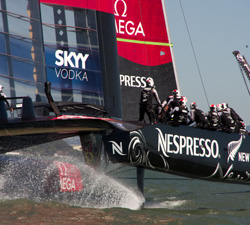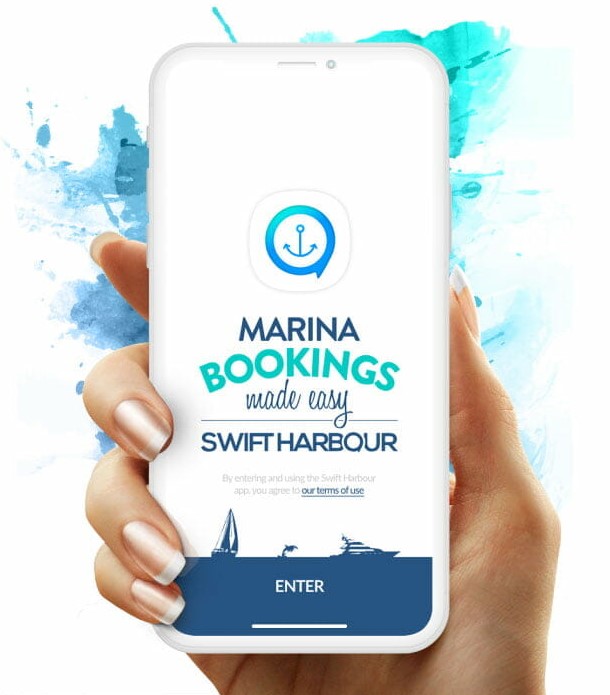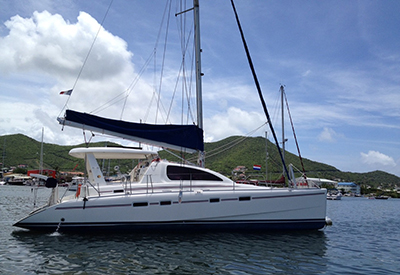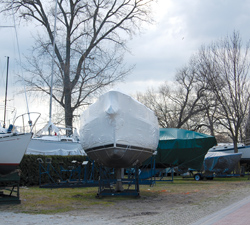Going online – Onboard
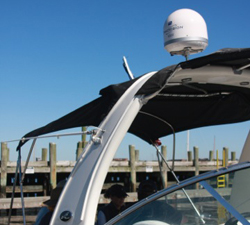
By Lorne Spence
Let’s face it. People like to be online.
Last year in Canada nearly 28 ½ million of us were online at least once a month, almost 83% of the population. Canada has just over 18 million people who are subscribed to Facebook. With stats like these, it’s no wonder that boaters have started to ask themselves: How is it possible to take the online experience onboard their boats?
Traditionally boats have been a safe haven from the hustle and bustle of life. It’s a chance to unplug and unwind, to break the connection with the office and with the electronic world. However, the last number of years has seen technology using the internet more and more to provide us with the experience we’ve become used to seeing. Online maps, web searches, social media; they all require an internet connection to stay in the loop. Home offices have become more common now giving people an opportunity to mix business and pleasure, as ones colleagues don’t know if you send an email from your home office or your “floating” office. Luckily, the technology behind mobile internet has grown as quickly as people’s demands for it. By making a few adaptations, you can turn your boat into a floating hotspot.
The easiest way to get online is WiFi. Fast, cheap, and commonplace, virtually every mobile device we use now has it. A WiFi basestation consists of 2 parts, a wireless router and a modem, with the modem usually being either a cable or ADSL (phone) type. The obvious issue on a boat though, is that the traditional modem setup won’t work. However, most modern marinas now offer WiFi, meaning if you’re close enough to the signal, you can connect directly to their router with your laptop/smartphone/tablet/etc. But, what happens if you’re at one of the slips furthest away from the clubhouse?
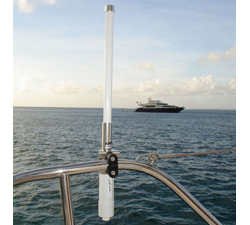 A solution many turn to is a WiFi booster. There are a number of companies who produce these products, with prices that generally ranging from $100 to $500. The principle behind all of these devices is the same: instead of the 50mA to 200mA of transmit power that most household routers have, they boost the output signal to nearly 1000mA. Combined with a high-gain antenna, they can dramatically extend the distance from which you can connect to a WiFi basestation. The world record for a WiFi connection is somewhere in the vicinity of 125 miles, done by some HAM radio experts with extremely specialized equipment, but this is obviously beyond the capability of most people. However, there are several companies who produce devices that claim to make reliable connections at up to five miles. There are many factors that can affect that range, landscape, trees, buildings, etc., but onboard a boat you can reasonably expect a connection within one mile, and up to four miles in ideal circumstances.
A solution many turn to is a WiFi booster. There are a number of companies who produce these products, with prices that generally ranging from $100 to $500. The principle behind all of these devices is the same: instead of the 50mA to 200mA of transmit power that most household routers have, they boost the output signal to nearly 1000mA. Combined with a high-gain antenna, they can dramatically extend the distance from which you can connect to a WiFi basestation. The world record for a WiFi connection is somewhere in the vicinity of 125 miles, done by some HAM radio experts with extremely specialized equipment, but this is obviously beyond the capability of most people. However, there are several companies who produce devices that claim to make reliable connections at up to five miles. There are many factors that can affect that range, landscape, trees, buildings, etc., but onboard a boat you can reasonably expect a connection within one mile, and up to four miles in ideal circumstances.
Another big factor in range is the quality of the WiFi signal provided by the basestation itself. A household router sitting on the manager’s shelf providing “free internet” will have limited range no matter how good your equipment. That being said, many businesses these days recognize the benefits of providing free WiFi, and offer a signal through a good quality setup.
Digital Yacht’s WL510 is a good quality WiFi booster, consisting of a high power transmitter and a remote high gain antenna that you mount on the boat much like a VHF antenna. This model features an Ethernet output, meaning if it’s plugged into another WiFi router onboard it can offer a rebroadcasted signal that can be utilized by any WiFi device onboard, such as a tablet, laptop or smartphone. It can also be plugged straight into the Ethernet port of a laptop and used as a standalone device.
Bitstorm, a Canadian company, offers a device called the BadBoy Xtreme. It shares the same principle as the WL510, with the exception that the transmit unit is connected directly to the antenna, eliminating any potential power loss introduced by a connector wire. An Ethernet based unit as well, it offers versatility and performance.
For plain ease-of-use, The Wirie is a winner. It uses a USB port to make the connection to a computer instead of the network port. This approach greatly simplifies operation as it is pretty much plug-and-play, but it also means the connection is limited to one computer.
For those boaters who want internet even when too far away from a hotspot, mobile internet can be a good solution, having grown in leaps and bounds over the last number of years. Data plans are synonymous with smartphones, and they allow users to stay online on the go. However, the same issues that are present with household routers (small antennas, low power) are present in smartphones. Once offshore, cell signal begins to drop off dramatically, becoming spotty and inconsistent.
An easy answer to this is to use a portable internet device. They use a SIM card just like a cell phone, but typically offer a pure data connection only. Depending on the unit, this data connection is then typically shared through local WiFi provided by the device itself. Many cellphones will do something like this already as you can put them in hotspot mode. But, with more output power than a cell phone, the range of mobile internet boxes is often much better than can be achieved with a handset. Also, with a dedicated device, the internet connection isn’t dependant on one person’s phone. Thirdly, many of these devices have a port for an external antenna, allowing their range to be extended even further.
Granted, there is a cost associated with the mobile internet box, monthly fees, etc., but the ability to maintain a connection even when in a more remote anchorage can be an attractive option. Both Bell and Rogers offer mobile internet devices, as well as some of the smaller cell providers. Also, if an unlocked device (not tethered to one provider) is purchased, the unit can often be used internationally by purchasing a SIM card in the country of travel. For those doing the Great Loop, having this ability can make the cost worthwhile.
For a truly seamless worldwide experience, the only real answer is satellite based internet. Once only the domain of large ships and megayachts, the cost of satellite units has dropped dramatically in the last few years. Satellite internet offers the ability to always stay online, no matter where you are in the world, from the Arctic Circle to Antarctica and all points in between.
Regardless of which service provider you choose, the cost of satellite is higher than all other forms of internet. That being said, the cost of data plans has been steadily dropping, and will likely continue to do so.
Currently the most cost-effective satellite internet is provided by KVH Industries, a US-based company that also provides products to the RV market and military markets worldwide. Through the Mini-VSAT platform, KVH has managed to lower data costs to $1.00/Mb, which in satellite terms, is a real bargain. It may sound expensive, but being able to have reliable, true high-speed internet anywhere in the world is an opportunity some may not want to pass up.
The other main satellite internet provider is Inmarsat. Historically Inmarsat has focused on the commercial shipping market, but once again, as technology advances these options are being brought to personal users on smaller vessels. Inmarsat’s data costs are roughly $24.00/Mb, but they justify the cost with very reliable connections from a network that has been around for many years.
Now there are some who may not be able to decide which system will work best for them, factoring in price vs. performance. The solution? Use multiple providers that will complement each other. It is possible to design a system that uses any combination of local WiFi, Cellular internet or Satellite internet that will choose which one to use based on your preferences and their availability. Imagine having a system that will use cheaper cellular internet when available, but once the vessel is out of cellular range, it will automatically and seamlessly switch over to satellite internet without you even noticing the change. The same can be done with local WiFi systems changing to cell or satellite. This option can offer considerable savings over using a more expensive system alone, and still have the benefits of each.
Now if all of this sounds complicated, it can be. But, it doesn’t have to be so. Whether you’re a weekend boater looking to stay in touch, or a long distance cruiser trying to keep up to date with family and friends, there is a solution for users of every skill level with the same result: it has never been easier to bring the online experience onboard your vessel.
Lorne is the Lead Service Technician with CMC Electronics Esterline in Mississauga, ON. lorne.spence@cmcelectronics.ca
Photo Captions:
Photo 1 – Currently the most cost-effective satellite internet is provided by KVH Industries.
Photo 2 – Bitstorm, a Canadian company, offers the BadBoy Xtreme WiFi booster.

